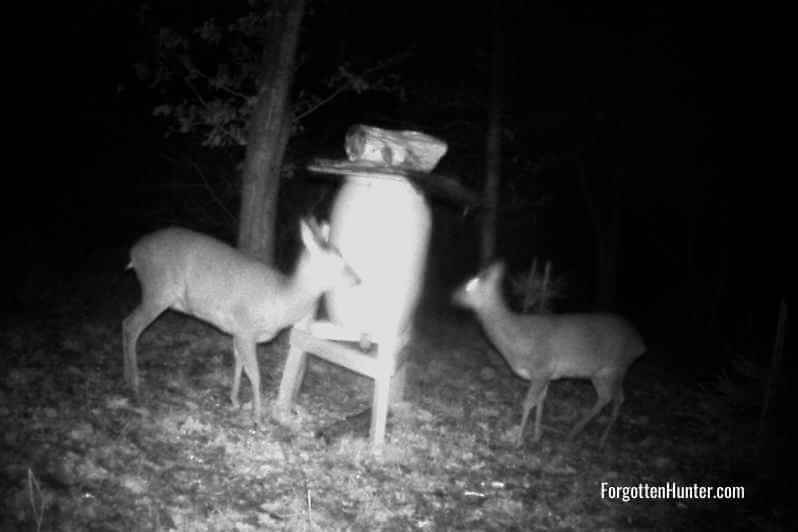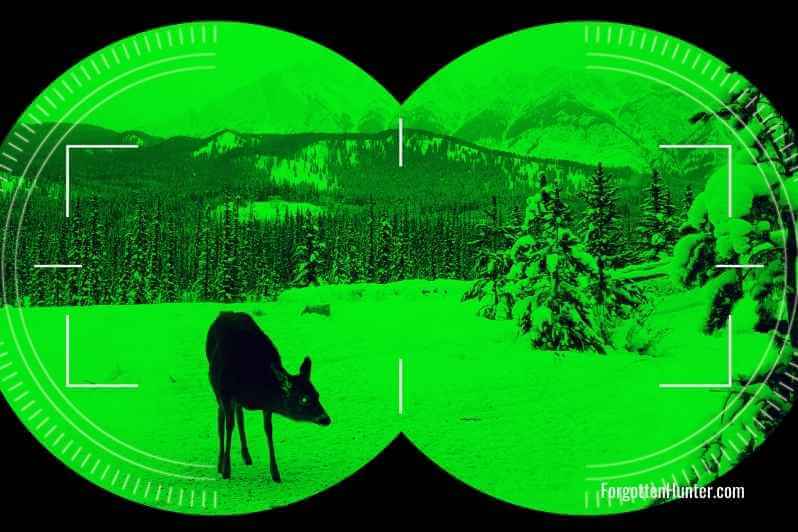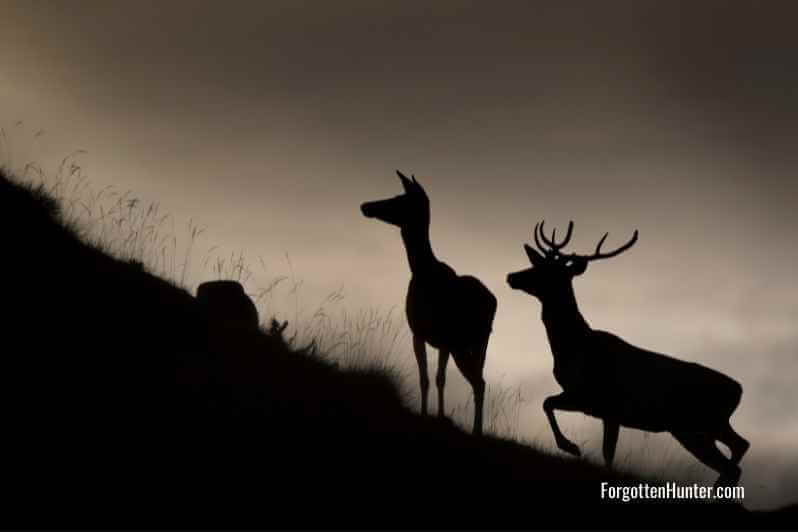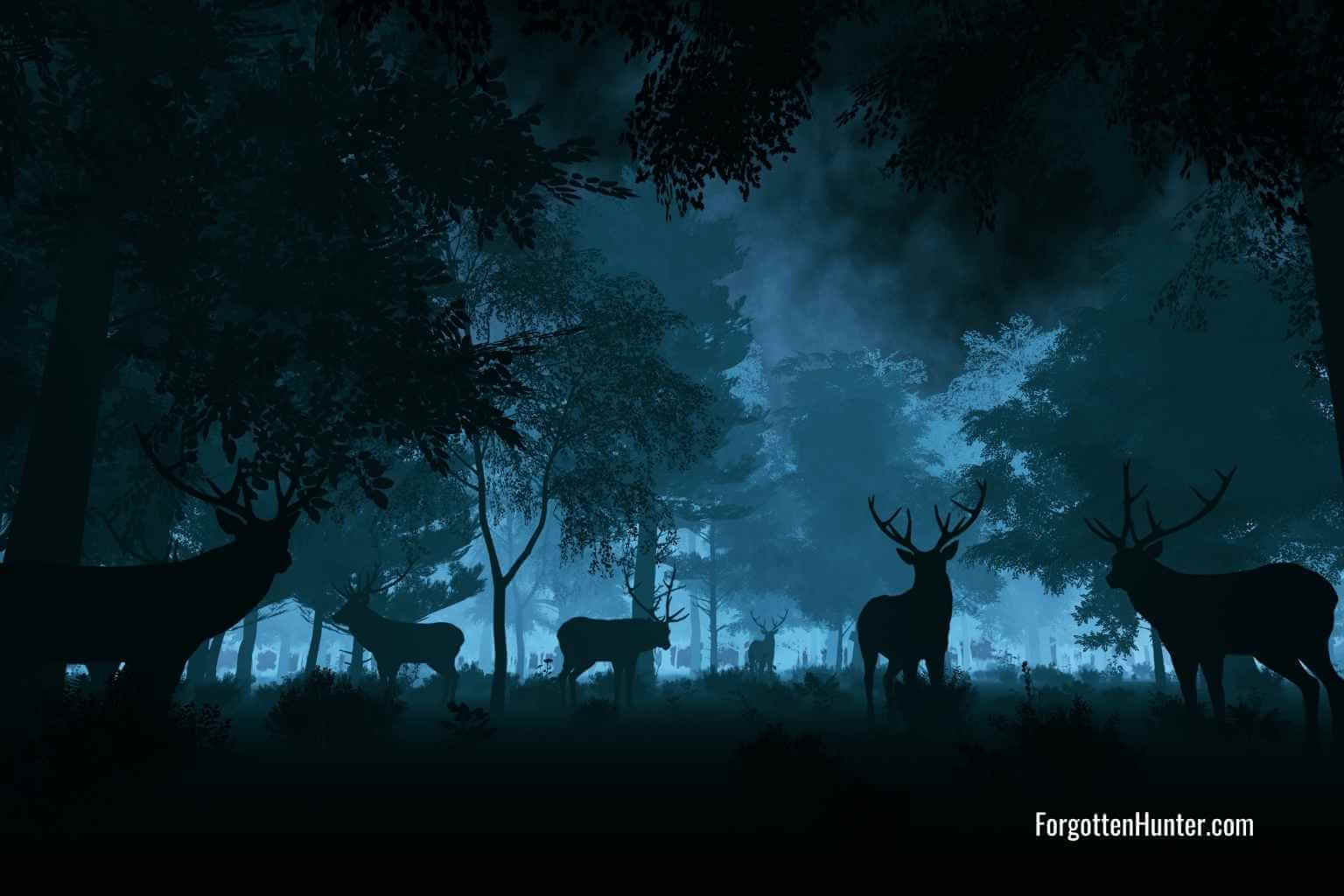Hunting in low light can be a tricky process. It will be harder for you to see your prey and get a clear shot on your target. But that doesn’t mean that it will be an impossible task. Here are some of the ways you can get the upper hand in low-light conditions.
Table of Contents
9 Low Light Hunting Tips:
Know Animal Movements
It’s always a good idea to think about the type of animal you are hunting and how they will respond to environmental changes. Some species become more active during low-light conditions. For example, deer will typically feed during sunrise and sunset.
If you know where the animals will be, you can get yourself set up in the right spot. It’s also a good idea to scope out the area. Look for any tracks or signs of trails. This will tell you which direction your prey will be coming from.
It’s usually a good idea to have a few hunting areas that you can try visiting. If you aren’t seeing any activity in one place, you can move to the other. If you like hunting for deer, check out this article on how you can find a good hunting spot. It can also be a good idea to chat with fellow hunters. They will be happy to point you to an active area.
Think about where you are positioning yourself. Ideally, the sun should be behind you. You don’t want it to be shining in your eyes as you are trying to identify the animals. It’s also vital to be downwind, so the animals won’t recognize your scent.

Get The Right Clothes
When in low-light conditions you want to wear a hat. This is a good way of keeping the sunlight out of your eyes, making it easier to focus on your surroundings.
Hold Your Gaze
It’s a good idea to consider the way that our eyes react to low-light conditions. If you shift your gaze from a dark area to a brightly lit one, it takes around 15 seconds for your eyes to adjust. As a result, you will often have blurry vision. This can be a major problem for a hunter, as you never know when you are going to be presented with a shot at a big game animal. The best way to solve this problem is by keeping your gaze focused on one place.
Using Electronic Equipment
One of the best ways to get an advantage is using electronic equipment. For example, you might want to use a lighted scope. This scope has dials that will glow in the dark. Another popular option is a laser line, so you can see what part of the animal your bullet is going to hit. We recently published our review of the 10 best night vision monoculars in 2022. Hawke Life published this article and has some more information on the electronic hunting gear available.
It should be noted that there are often laws that govern the use of these devices. In some states, they will be banned. At other times, you won’t be able to use them on your rifle or will only be able to use them to target certain species. Always check the regulations before you start your hunt.
Get Low-Light Binoculars
One of the best tools to use is a pair of low-light binoculars. If you get a regular pair of binoculars, they might struggle close to dawn and dusk. The darker it becomes, the less clarity you will have. On the other hand, low-light binoculars have been built to handle these times. Plus, this device will be legal.

If you want your binoculars to last for a long time, there are a few things that you need to consider. First, it’s a good idea to get something that will be durable and able to cope with poor weather conditions. It’s also a good idea to look at the size of the objective lens. The bigger the diameter, the more light it will pick up, and the clearer the view will become. If you want more tips, check out this list of binoculars for low-light conditions.
Look for Silhouettes
In low-light conditions, you will need to get used to spotting the outline of animals. Changing the backdrop can make this easier. In the colder months, try hunting around snowy areas. The white surface will reflect the light, allowing you to see movement more clearly.
Use Red Light
Most people will be familiar with using white or yellow light. But this can be a major problem when hunting at night. Animals will be able to spot this easily. It will make them more on edge, often they won’t enter the area at all.
Instead, it’s best to use a red light. This is harder to detect and should give you plenty of light to see by. If possible, use a headlamp. This lets you keep your hands free.
Hit the Target Area
Accuracy is always a good quality for a hunter to possess. But it’s even more important when you are hunting in low-light conditions. If you miss the vitals, be prepared to take a second shot quickly. It can help to use a gas-powered rifle, which has a faster shooting speed.
If you are unable to down the animal, you will be setting yourself up for a long blood chase. This will be a difficult challenge as the sun starts to go down, especially if you are going over difficult terrain.
Get Comfortable in Low-Light
If you are new to hunting in these conditions, the most important thing you can do is practice. It’s best to do a few sessions on the range, so you know what to expect. It might take a few trips for you to find an approach that works for you.

Conclusion
Sunrise and sunset are the best times of the day for hunting, this is when most species will be more active. However, if you are going to hunt at these times, you will need to take a few extra pieces of kit. For example, you’ll need torches and specialized binoculars. But, if you take these tips on board, you should get excellent results!

